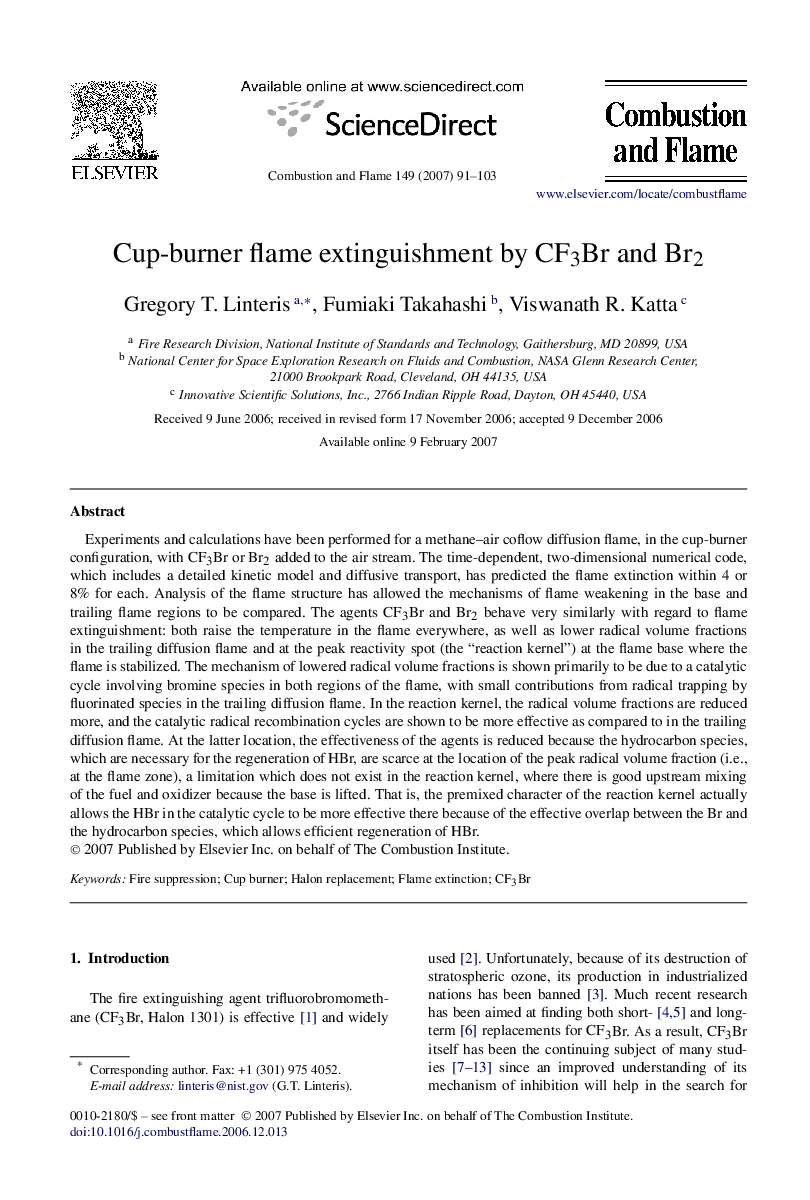| کد مقاله | کد نشریه | سال انتشار | مقاله انگلیسی | نسخه تمام متن |
|---|---|---|---|---|
| 168113 | 457907 | 2007 | 13 صفحه PDF | دانلود رایگان |

Experiments and calculations have been performed for a methane–air coflow diffusion flame, in the cup-burner configuration, with CF3Br or Br2 added to the air stream. The time-dependent, two-dimensional numerical code, which includes a detailed kinetic model and diffusive transport, has predicted the flame extinction within 4 or 8% for each. Analysis of the flame structure has allowed the mechanisms of flame weakening in the base and trailing flame regions to be compared. The agents CF3Br and Br2 behave very similarly with regard to flame extinguishment: both raise the temperature in the flame everywhere, as well as lower radical volume fractions in the trailing diffusion flame and at the peak reactivity spot (the “reaction kernel”) at the flame base where the flame is stabilized. The mechanism of lowered radical volume fractions is shown primarily to be due to a catalytic cycle involving bromine species in both regions of the flame, with small contributions from radical trapping by fluorinated species in the trailing diffusion flame. In the reaction kernel, the radical volume fractions are reduced more, and the catalytic radical recombination cycles are shown to be more effective as compared to in the trailing diffusion flame. At the latter location, the effectiveness of the agents is reduced because the hydrocarbon species, which are necessary for the regeneration of HBr, are scarce at the location of the peak radical volume fraction (i.e., at the flame zone), a limitation which does not exist in the reaction kernel, where there is good upstream mixing of the fuel and oxidizer because the base is lifted. That is, the premixed character of the reaction kernel actually allows the HBr in the catalytic cycle to be more effective there because of the effective overlap between the Br and the hydrocarbon species, which allows efficient regeneration of HBr.
Journal: Combustion and Flame - Volume 149, Issues 1–2, April 2007, Pages 91–103